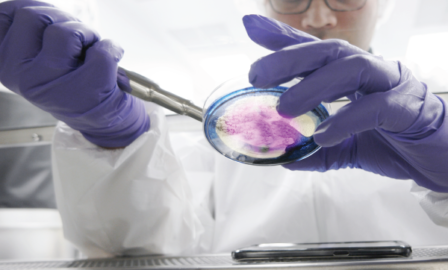Implementing the 5S Steps
For companies that have limited operating expenses, 5S gives them a methodology to delivery process improvements with a high return on investment and immediate payback. Before implementing any improvement approaches such as Lean or Six Sigma, organizations should implement the 5S steps. By doing this, the likelihood of your continuous improvement efforts succeeding is greatly increased, as the benefits from your 5S implementation will be apparent and therefore easier to achieve buy-in at all levels of the organization.
5S Step Benefits
With respect to manufacturing improvements, when comparing manufacturing plants where none of the 5S practices are in place, and plants with a full 5S environment, benefits typically are found in various process areas and average:
Quality – 90 percent improvement;
Productivity – 15-20 percent improvement;
WIP Reduction – 50-80 percent improvement;
Increase in Space – 30-40 percent improvement;
Accident Reduction – 90 percent improvement; and
Non- Value-Added Time Reduction – 25 percent improvement.
The 5S steps aren’t just for the shop floor. Think about it: in a typical day in the office how much time do you waste searching for information, looking for computer files, and walking back and forth to the printer to retrieve a printout or fax? Are there mistakes being made because you have inaccurate or outdated information? The 5S themes of organization and standardization are universally applicable to all work environments.
Each of 5S steps is critical to optimize outcomes.
1st S Sort (Seiri 整理)
In the Sort step, necessary items for the workplace are separated from unnecessary items and subsequently removed. A “red tag” campaign is conducted to evaluate items based on their usefulness and frequency of use. Unnecessary items crowd the workplace and make it difficult to find and keep important items near the work area. These items include obsolete equipment, broken tools, obsolete inventory, scrap, old files, etc. Safety and productivity are improved as a result of the extra floor space created.
2nd S Set-in-Order (Seiton 整頓)
The 2nd S involves installing systems whereby necessary items are always located in logically predetermined locations. Based on the inventory classification of the red tag campaign, items are placed in locations based on the frequency of use. Frequently used items are placed at or near the workplace while infrequently used items are stored in specified locations. When items are stored in logical places time is not wasted looking for the appropriate tools or fixtures. The “gold standard” for the 2nd S is a workplace organized such that needed items can be retrieved within 30 seconds with a minimal number of steps.
3rd S Shine (Seiso 清掃)
The 3rd S consists of the carrying out of regular cleaning activities that ensure that machine downtime is minimized by keeping the factory dirt and dust free and the machines properly maintained. Observers are always amazed when they see how incredibly clean the shop floors are of world-class Japanese manufacturing plants. Daily cleaning of machines and production areas results in dust and dirt-free factory which reduces breakdowns and maintenance costs while improving safety and quality. Outside of the shop floor, an organized office can help employees feel more comfortable in a clean and uncluttered environment, which in turn can improve the quality of work.
4th S Standardize (Seiketsu 清潔)
The goal of the 4th S is to maintain and entrench and the first 3S’s via standardization. This is achieved by providing easily understood visual warnings as well as standardized work methods and procedures. Equipment is marked and labeled so that observation and inspection of equipment can be conducted easily and uniformly. Anyone on the shop floor, not just the actual operator, should be able to determine when a machine or other piece of equipment is malfunctioning. As a result, determining the condition and status of equipment becomes accurate and easy and responsiveness increases. Reaction time to malfunctions is reduced resulting in reduced downtime. Standardized procedures result in the most efficient use of resources as only the most efficient practices are followed.
5th S Sustain (Shitsuke躾)
The 5th S involves developing habits to entrench the 5Ss on an individual basis. 5S must become a way of life, and not just another quick fix program. The key tool for this entrenchment is a detailed regular appraisal of the workplace called the 5S Audit. The audit ensures that the 5S program continues indefinitely and a return to old habits does not occur.
Where should the 5S steps be applied?
The answer is in all industries and all departments – it can and should be applied everywhere. 5S creates the basis for Lean thinking. By getting the workplace under control, waste can be more easily identified and eliminated. Root causes of process variability will also become more visible. Finally, implementing 5S will help you get some significant quick wins that will help build momentum for your continuous improvement program.
Contact our Operational Excellence Consultants


